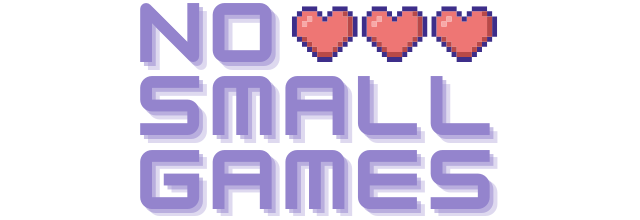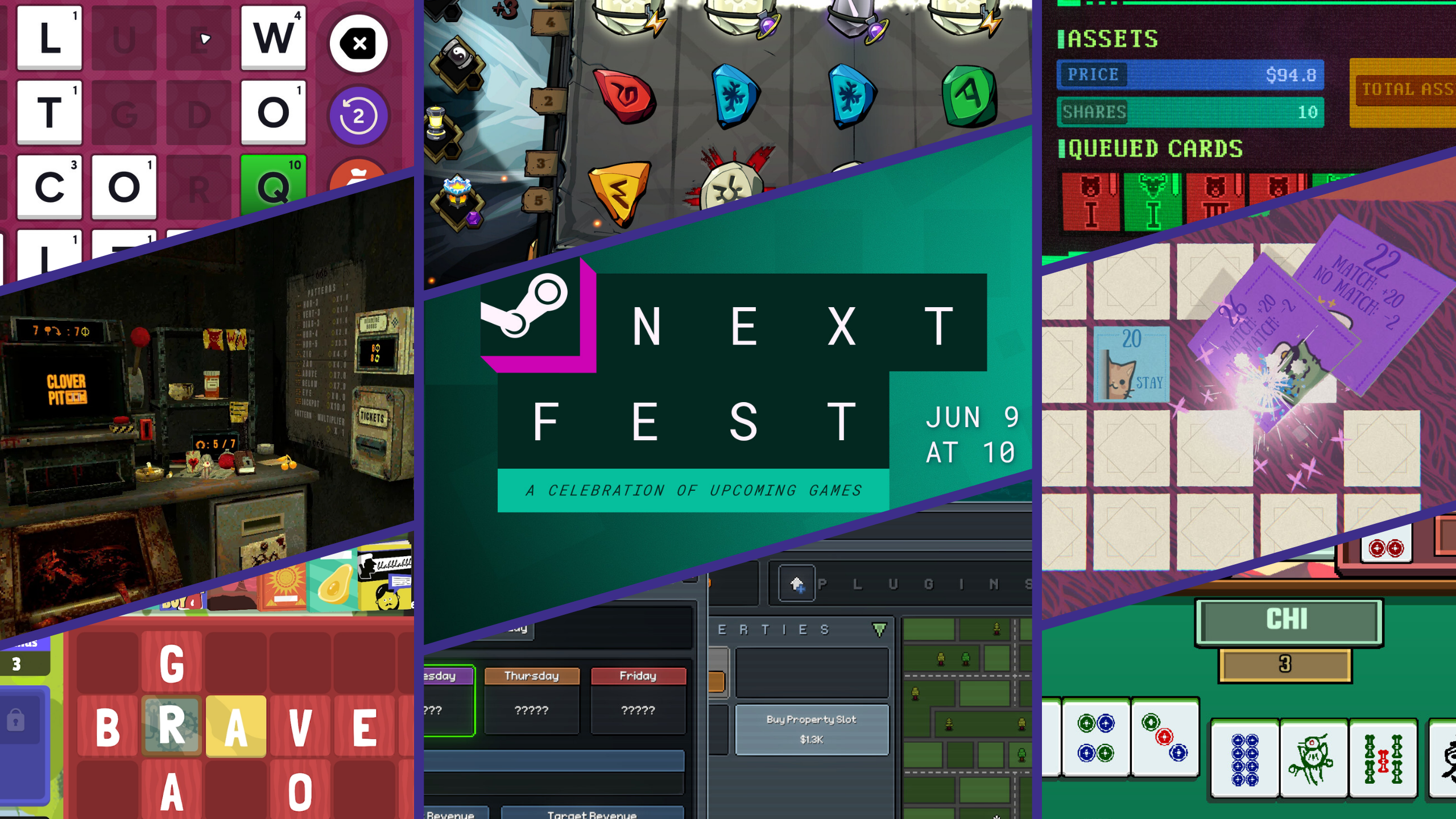
I tried every Balatro-like game I could find in Steam Next Fest AGAIN
Because my thirst cannot be quenched, I once again hunted down every Balatro-like game that I could find.
It’s that time again, babes! Another Steam Next Fest means I spent another day pouring through the roguelike and deckbuilding categories trying to find every single Balatro-like game that I could get my grubby little hands on. And June’s cohort of demos did not disappoint! There are a lot of fresh takes on this microgenre represented in the list.
Obviously, games like Balatro represent a very niche and specific genre, so not every roguelike deckbuilder made the cut. If you’d like to see the criteria I used to choose or eliminate certain games, you can refer to the breakdown at the end of my article from last February’s Steam Next Fest. I also recommend checking out that list if you get through the demos below and still feel hungry for more addictive deckbuilder gameplay loops.
One last note before we get into the good stuff: in addition to disqualifying games for non-Balatro-like gameplay, I also disqualified a couple of games on this list for their use of Generative AI. This might be a controversial decision, but if I’m going to feature games on this list, I want to know that no part of them was made off the backs of creatives whose work was used to train models that will never provide attribution or compensation.
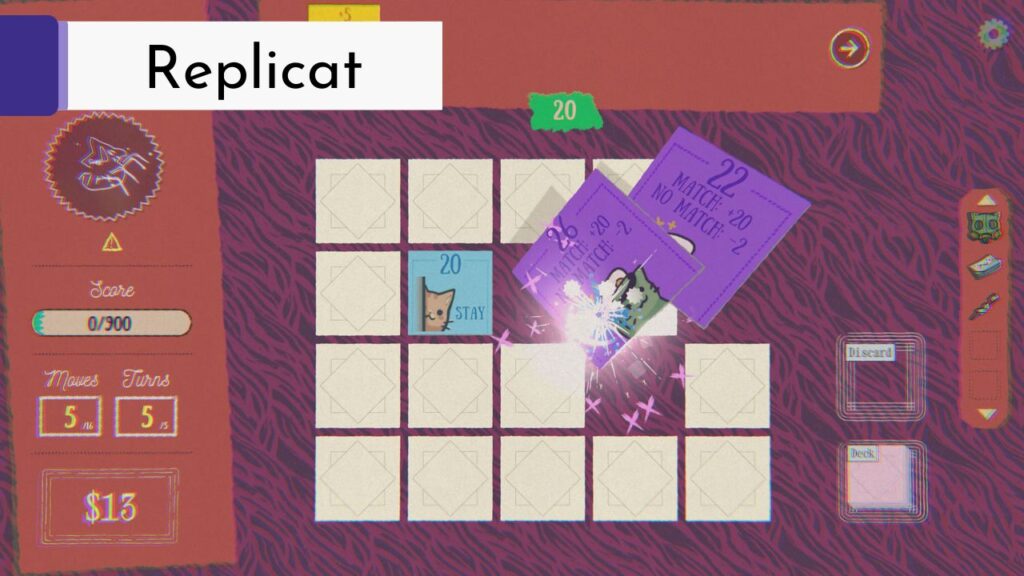
1. Replicat
Developed by: Brainoid Games
Replicat is one of two Balatro-likes on this list that base their gameplay off the classic card game Memory. To be honest, I was skeptical of the idea. But after playing Replicat, I have to say, this game has no business being this fun. I’m hooked. Just like in Balatro, the game presents you every round with a score threshold to meet. To score points, you take moves to reveal the face-down cards on your 4×4 grid. When you find two matching cards, they become a pair and get added to your hand. You get to play up to five pairs per turn, and have a limited number of turns in which to try to meet the target score.
I forgot to mention, all of the cards in your deck feature designs of cats (which strike a remarkable resemblance to some famous internet cats you might recognize). The cards also each have a basic score value attached to them. In between rounds, the shop offers new cards that feature additional bonuses, like multipliers, or effects like “Stay”, which causes the card to remain revealed until its match is found. You can also buy Curios, which function like Balatro jokers, and have hilarious designs and clever passive effects. The game is all packaged up with a clean, intuitive UI, adorable visuals, and a funky, jazzy soundtrack that is sure to get stuck in your head.
Release Date: TBA
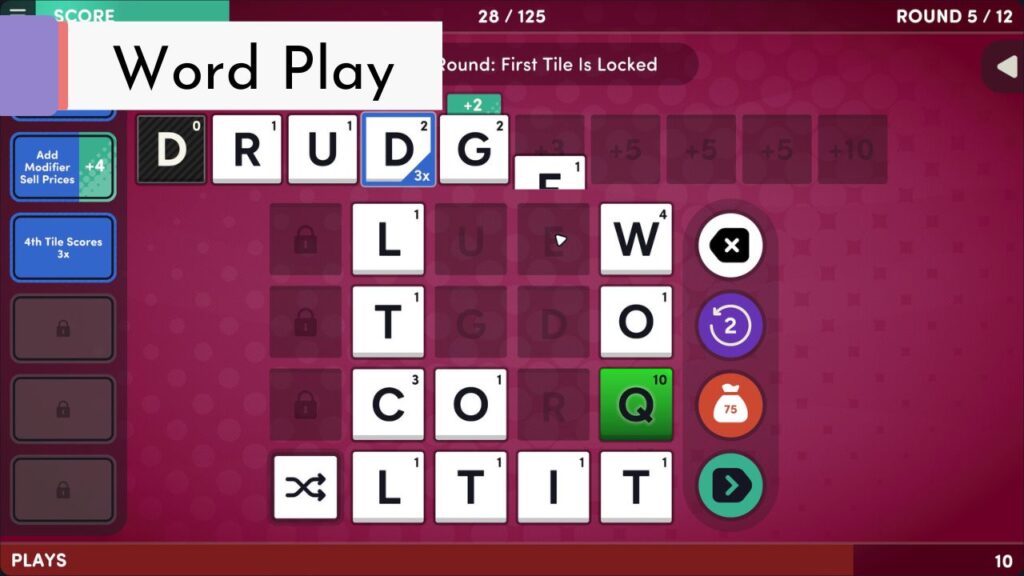
2. Word Play
Developed by: Game Maker’s Toolkit
There are now quite a few word-based Balatro-style games out there, most of which take after the core gameplay in Scrabble. You draw letters from a pool, try to spell the longest, highest scoring word possible, and try to meet the target score within a predetermined number of turns. When I first saw Word Play, I was a little worried it was going to be more of the same, but I was pleased to find that it features some unique characteristics that make it stand out in its own way.
For starters, the game doesn’t give you a number of turns to play a word per round, but rather a number of turns total. This means that if you have incredibly bad luck in your draws one round, you have lots of opportunities to play words and score points, but using a lot of turns will make things trickier down the road. One of the other big differences between Word Play and other word-based Balatro-likes is that you never run out of letter tiles in your hand. Each time you play a word, you choose letters from a 4×4 grid that gets repopulated after each turn. I loved that this made it easy to keep coming up with words to play, but the game is balanced so that scoring enough points per round is still plenty challenging.
I’m really loving this trend of wordplay and spelling Balatro-likes. If you also can’t get enough of them, my article from last Steam Next Fest features a few more to check out.
Release Date: July 14, 2025
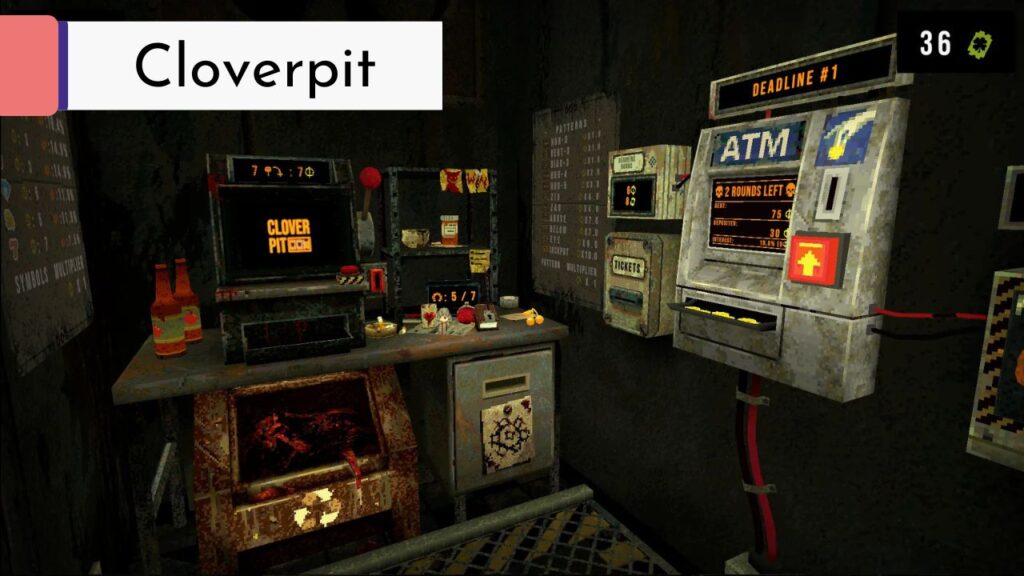
3. Cloverpit
Developed by: Panik Arcade
🎵 Let’s go gambling! 🎶
Cloverpit has already taken the internet by storm and it’s not even out yet. I should confess, first, that I actually didn’t play this demo during Steam Next Fest. I originally played it a few months back, but I discovered some fun new additions since then. This is a dark and dingy, slot machine-based roguelike, with PS1 era graphics. You find yourself in a small metal cell, surrounded by an ATM, a slot machine, and a few other devices and furnishings. Using your starting pot of coins, you have to gamble your way to freedom, earning enough winnings to pay off exponentially large debts.
This game is filled with piss and vinegar, and I do mean that literally. Between the utterly addictive gameplay loop, the bizarre and unsettling world building, and many quirky touches to the audio and visual experience, it’s no wonder that Cloverpit has captured so much attention. If there’s any Balatro-like that has the potential to become just as big as the original thing, it’s this.
Oh, and for those wondering about the prize the game promises to those who successfully make it through all the rounds of the demo… I won’t spoil anything, but I did win and the prize is actually kinda cool. If you plan on buying the game, I think it’s worth it to try your hand at beating the demo.
Release Date: 2025

4. Insider Trading
Developed by: Naiive
Ok, I have one for the math sickos within the Balatro community. Insider Trading is a roguelike deckbuilder based on stock market trading. You’re starting out as a new employee at an investment firm, and each week the firm gives you a baseline budget to use to invest. From there, you have five days to grow your pot to the target value for that week. You have to survive a given number of weeks to earn your promotion.
The interesting catch here is that your deck is made up of market events, which get drawn each day in a specific order. You earn tokens over the course of the game, which you can use to influence these market events, and to add to your deck. Each round, you need to put your finger on the scale to make your investments succeed, or skip trading for the day, in order to reach your target. Honestly I was pretty intimidated at first by the interface and the calculations, but I actually still found success by mostly eyeballing the situation each round. If you like going deep on the math side of Balatro, though, this is definitely one to check out.
Release Date: 2025
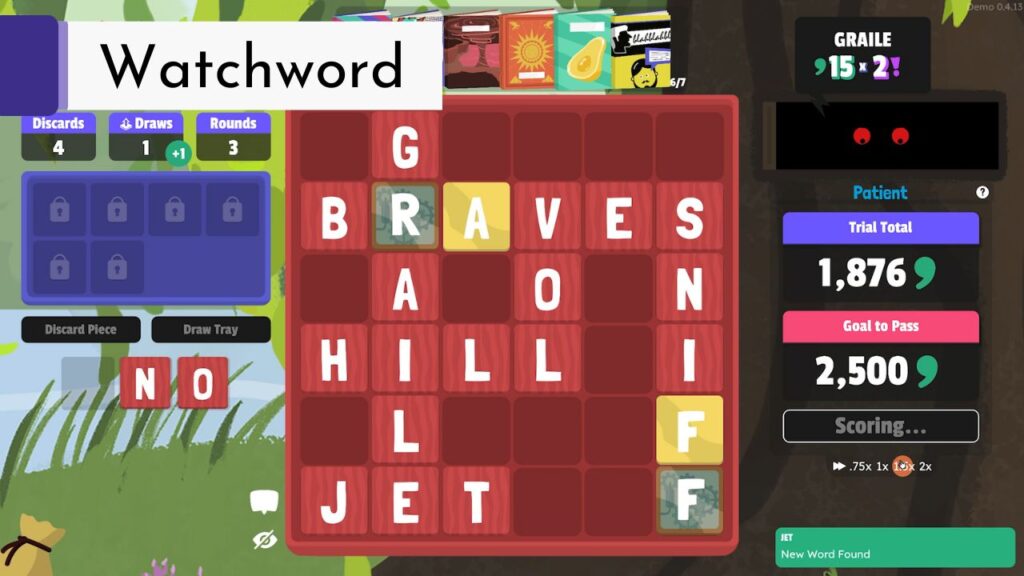
5. Watchword
Developed by: Big Quail Games
Watchword wins the award for most out-of-left-field worldbuilding on this list, and the whimsical mechanics actually had me laughing aloud to myself. It also offers a fresh take on the word-based Balatro-like. I would compare it most closely to Bananagrams. You draw letter tiles, and place them onto a 4×4 grid. You can spell out multiple words, but they must be connected and all connected letters must form valid words. Each word has a base score based on its letters’ value, then the word’s length triggers multipliers to that base score.
The premise of Watchword is that you’ve been transported to a magical realm where you have to prove yourself against a series of epic trials. During each trial, a Watchguard will preside over your heroic word-based deeds. Each Watchguard has a different disposition, which impacts how your rounds go. Some Watchguards are helpful and scatter special bonuses across the board, while some are crotchety or cantankerous and will try to throw obstacles in your path.
Between rounds, you get to visit the town, where there are several merchants to go visit for upgrades, bonuses and new letters. The Buybriarian will sell you books, which function like jokers in Balatro. The mail carrier will bring you mail that includes special upgrades. The wizard will help you enchant letter tiles. You get the idea. While some of these goods and services cost gold, you can access even better upgrades if you bribe the merchants with your other currency: cheesecake. That’s right, there are two currencies in Watchword: gold and cheesecake. There’s a lot that I’ll do for a slice of cheesecake, so I get it. All in all, Watchword is wacky, whimsical, and offers really solid and fun gameplay to boot.
Release Date: Q3 2025
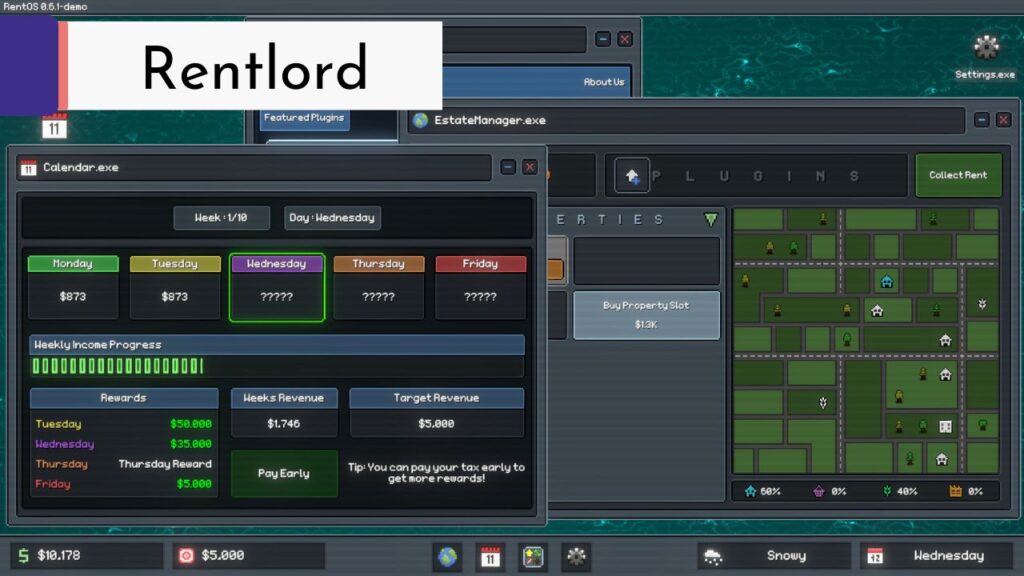
6. Rentlord
Developed by: verty
I won’t lie, I wasn’t super excited about a game where you play a landlord. But if you’re going to profit off of people’s need to have a roof over their head or a space in which to run their business, then I guess it’s best to do so in a fictional world, right? Similar to Insider Trading, each round represents one in-game week. You receive a quota that you need to meet by Friday, by collecting rent from your properties. You start off the game with an initial pot of money to use to buy your first property. In between days, you can also use your money to purchase plugins (the whole interface looks like a retro desktop computer) that provide passive bonuses to the rent you collect.
One interesting element of the gameplay design is that, at the end of each week, you’re not measuring your current amount of money in hand against the quota. Instead, you’re comparing the quota against how much money you collected from your renters. So, it doesn’t matter if you end the day on Friday with $5 in your account, as long as you collected enough rent. Sounds like capitalism to me! Fans of the game Monopoly will likely find this gameplay feels pretty familiar and enjoy this take on Balatro.
Release Date: June 23, 2025
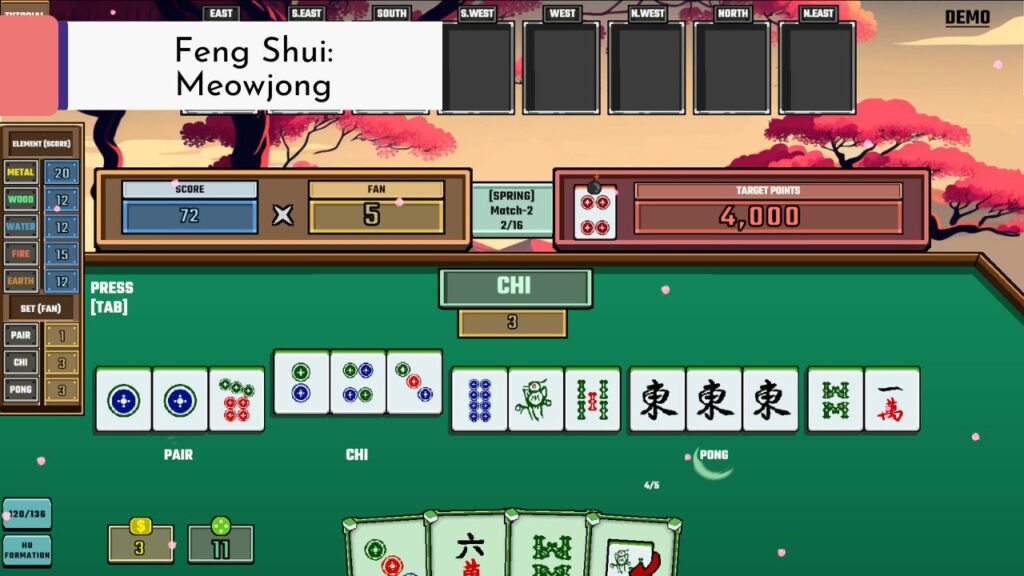
7. Feng Shui: Meowjong
Developed by: WaveBreak
Feng Shui: Meowjong is not the first Mahjong-based Balatro-like out there (go check out Aotenjo: Infinite Hands), but it is the first one I’ve played. As far as I can tell, this is a pretty straightforward take on Balatro-ified Mahjong, where the only major difference is that you’re using Mahjong tiles to build Mahjong hands. Personally, I was grateful that there weren’t a ton of additional mechanics or systems added on top, so that I could focus on getting familiar with the tiles and possible combinations.
As is typical in Balatro-likes, after each round of playing hands to try to reach the target score, you get a shop phase where you can buy trinkets that give you passive buffs. Most of the trinkets you can buy are shaped like lucky cats, with different designs and effects, and they are oh-so-cute! One small but unique addition is that you can generate an elemental currency, in addition to money, which you can use to purchase special buffs and effects. Unlike the lucky cats and other trinkets, these are effects you can use once and choose when to use during gameplay. Overall, I really appreciated how straightforward Feng Shui: Meowjong was, as someone who is still new to Mahjong.
Release Date: TBA

8. Matchstone
Developed by: Ideas Per Second
Matchstone is the second Memory-based Balatro-like on this list. In Matchstone, you turn over face-down stone tiles, that you click to reveal in pairs, to see if you can get a match. Matched stones produce shards, which make up your base score, and then certain stones also add to your multiplier. As always, each round you’re trying to reach the target score. Unlike in Replicat, during each round of Matchstone you will see all of the stones in your deck laid out facedown at once. This means the more you build out your deck, the more challenging it may be to get a match.
Similar to a traditional 52-card deck, each pair of stones has both a class (i.e. Amethyst, Gold, Jade, etc.) and a value (things like Minerite, Lookite, etc.). The class often determines what types of additional effects the stone will have, and you can buy passive bonuses in the store that boost the value of all stones of a given class. The value or specific type of the stone dictates the specific effects it provides. This was another great take on the Memory-based deckbuilding roguelike, with a chill, simple aesthetic that trends away from the overstimulating vibes of some of the games in this genre.
Release Date: TBA
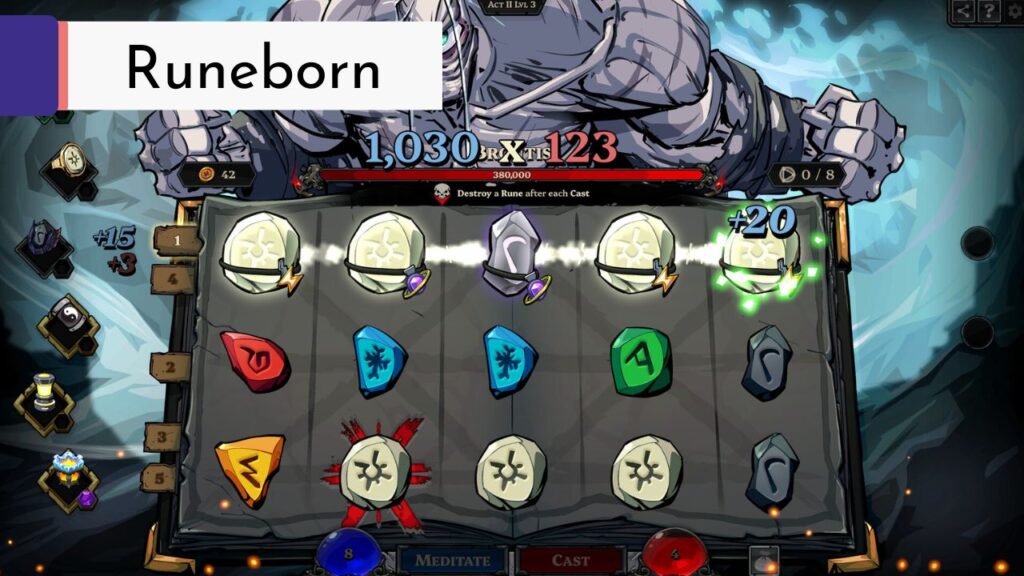
9. Runeborn
Developed by: iDream Interactive
Last but certainly not least, Runeborn is a dark fantasy take on the Balatro-like, that uses rune casting as its base mechanic. The game displays the runes in a grid, giving you the goal of creating slot machine-style patterns along the rows. You can “Meditate” to recast some of the runes, but the catch is that you can only freeze a certain number of runes in place at a time. Each type of rune does a specific amount and type of damage, which you then use to attack the mythical beast or villain that you’re currently facing off again.
At first, when I discovered that you’re using the score you generate to attack an enemy’s HP bar, I was worried I had stumbled across another Slay the Spire-like and would have to disqualify Runeborn. But you actually don’t have your own HP bar to protect, and the creatures you’re fighting never attack back, so it is a true Balatro-like. The illustrated, almost comic book-like art is absolutely gorgeous and haunting. My only complaint is that the runes don’t display their damage values outright, so if you want to predict how well your next move will go, you have to do a lot of hovering over each one. Overall, another great Balatro-like, oozing with vibes.
Release Date: Q3 2025
About No Small Games
No Small Games is an indie game recap and review podcast brought to you by hosts Kate and Emily! They became friends while streaming on Twitch and bonded over their love of indie video games. In each episode of No Small Games, the two will discuss an indie game they both played independently. They’ll compare their experiences: the good, the bad, their most memorable moments of their playthroughs.
Learn more about the podcast and its hosts on the About page.

